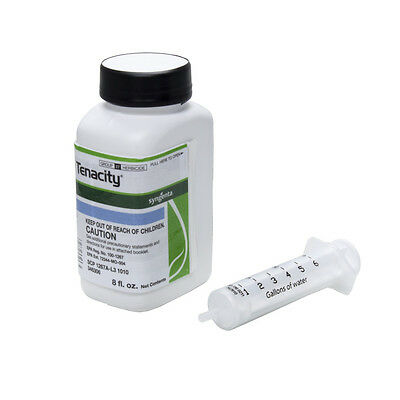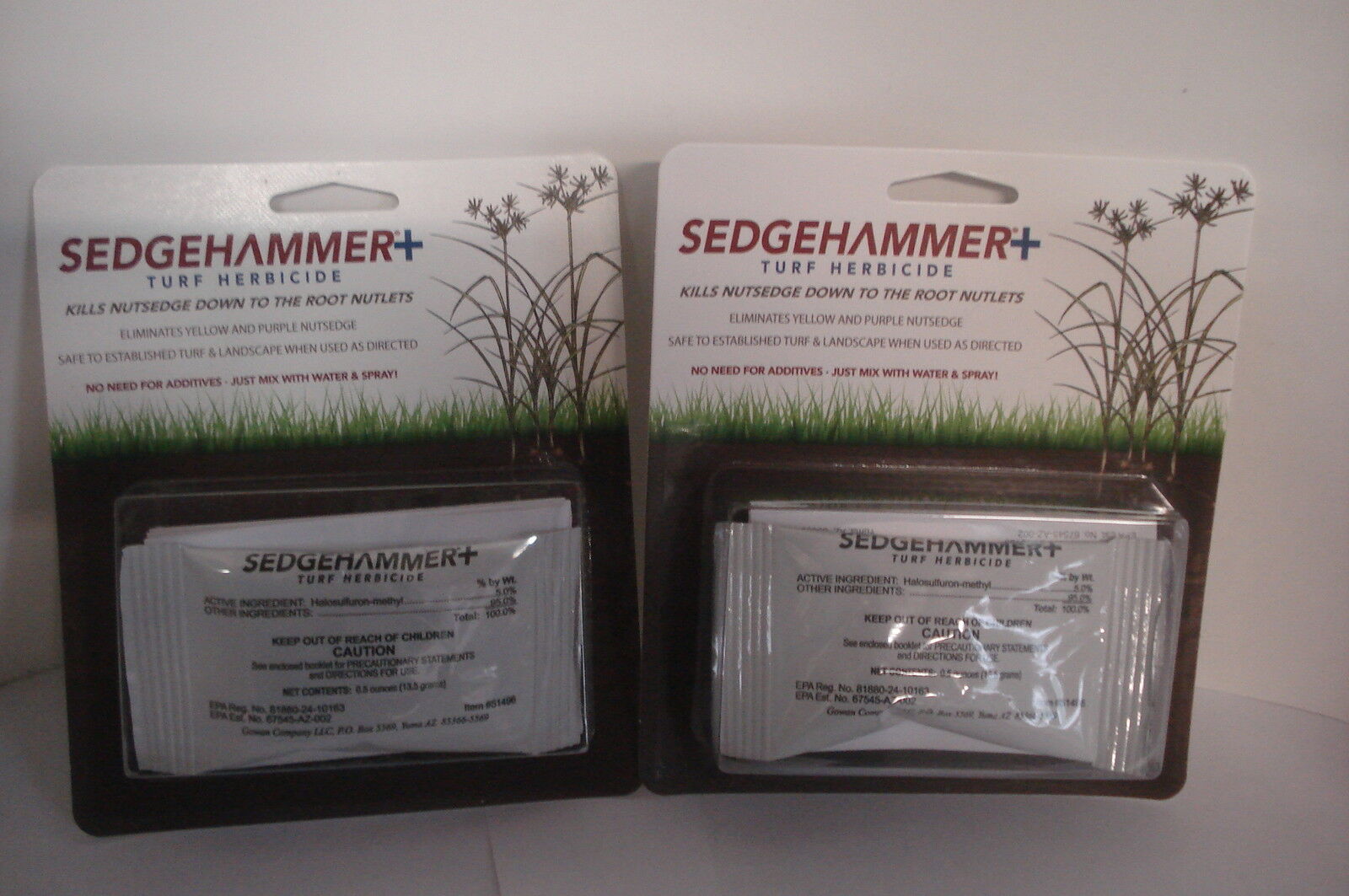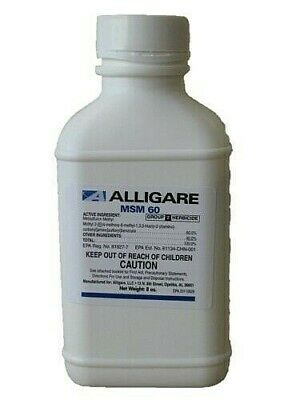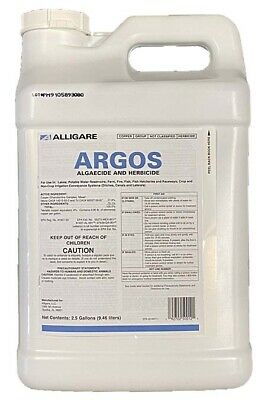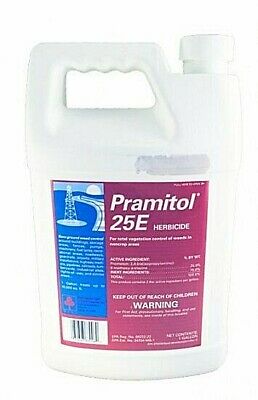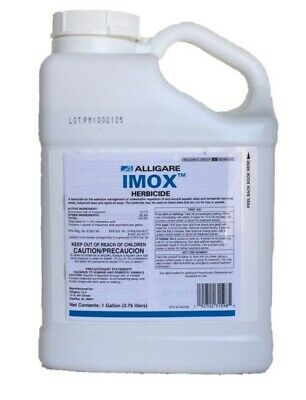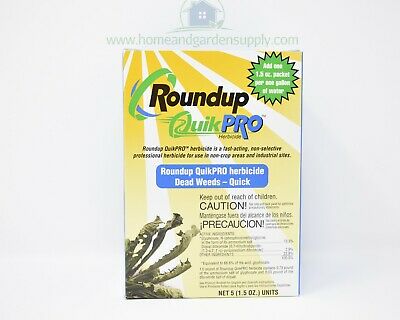-40%
Tenacity Selective Herbicide 8 oz Systemic Pre / Post Emergence Weed Control
$ 46.88
- Description
- Size Guide
Description
Tenacity Herbicide8 oz Bottle
Tenacity is a systemic pre-emergence and post-emergence herbicide for the selective contact and residual control of weeds in turfgrasses. When applied as a pre-emergent, weeds absorb Tenacity during emergence from the soil. Dry conditions following application may reduce the pre-emergence activity. If rainfall (0.15 inches) has not occurred within 10 days after a pre-emergence application, activate with 0.15 inches of irrigation. When used as a post-emergent, susceptible weeds absorb Tenacity through foliar contact and soil absorption. Foliage of treated weeds cease growth after application, then turn white (loss of chlorophyll) and death may take up to three weeks. A repeat application is required after two to three weeks for improved post-emergence weed control.
A
non-ionic surfactant
should be added in post-emergence applications.
Active Ingredient:
Mesotrione
- 40%
Target pests:
Barnyardgrass, Carpetweed, Chickweed, Clover, Crabgrass (large & smooth), Dandelion, Foxtail, Goosegrass, Henbit, Nutsedge, Purslane, Thistle, Wild Carrot and others
* See label for complete list
For use in:
Kentucky Bluegrass, Centipedegrass, Buffalograss, Tall Fescue, Perennial Ryegrass, Fine Fescue, St. Augustine Grass
Application:
4 - 8 oz. per 30 gallons of water per acre
* See label for complete application instructions
Formulation:
Professional Product
Group 27 Herbicide
Manufactured By:
Syngenta
What makes Tenacity different than other currently used turf herbicides?
Tenacity is a selective, systemic herbicide that features a new mode of action for pre- and post-emergence grass and broadleaf weed control in several cool- and warm-season turf species—like keeping bentgrass out of your rough. Tenacity can also be applied on established or newly seeded turf.
How was Tenacity herbicide discovered?
A Syngenta scientist in California noticed that there were fewer weeds growing under his bottlebrush (Callistemon citrinus) plant, far fewer than can be explained by shading alone. He concluded that the plant must be producing allelochemicals to suppress weed competition. Syngenta synthesized mesotrione based on the allelochemicals produced by the bottlebrush plant.
What is the mode of action of Tenacity herbicide?
Tenacity inhibits a plant enzyme called HPPD that is essential to photosynthesis and prevents formation of carotenoids in susceptible plant species. Without carotenoids, light energy and by-products of photosynthesis will destroy chlorophyll and cell membranes. This results in bleaching of leaves followed by necrosis and death of the plant.
How quickly does Tenacity work?
Once absorbed, Tenacity quickly translocates throughout the plant. Weed growth is suppressed soon after application, as photosynthesis is disrupted. Death of the plant usually occurs within two to three weeks.
What are some of the unique benefits of Tenacity herbicide?
Tenacity has pre- and post-emergence activity on 46 dicot and monocot weed species. It can selectively control perennial monocots such as bentgrass and nimblewill and annuals such as crabgrass and goosegrass in many turfgrass species. Tenacity can be applied at the seeding to prevent weed germination and allow the turfgrass species to establish without weed competition.
Can Tenacity be used to get bentgrass out of roughs and fairways?
Yes. Tenacity selectively controls bentgrass out of Kentucky bluegrass, perennial ryegrass, and tall fescue turf.
What does it mean that Tenacity was granted reduced-risk status by the EPA? Why did Tenacity earn this status?
Reduced-risk is an EPA designated registration status that accelerates the process for registration of certain new plant protection products. Tenacity received reduced-risk status by the EPA based on its unique mode of action, low use rates, and favorable toxicity and human health profiles, as compared to other herbicides currently on the market.
On which grasses has Tenacity been tested for use at or prior to seeding?
Tenacity is safe for use at or prior to seeding on Kentucky bluegrass, tall fescue, perennial ryegrass, and centipedegrass. Application at seeding can be made to fine fescue only if it is less than 20% of a seed mixture.
Are there any grasses on which you can't use Tenacity?
Tenacity is not recommended for use on zoysiagrass, hybrid or common bermudagrass, seashore paspalum, or kikuyugrass.
Can Tenacity be tank mixed with other herbicides?
Tenacity can be tank mixed with
Barricade
, dicamba, carfentrazone, triclorpyr, atrazine, simazine, s-metolachlor, bentazon, and several three-way phenoxy herbicides. Combinations can help turf managers broaden the weed control spectrum or improve the level of weed control over single-product applications.
How rainfast is Tenacity?
Tenacity is rainfast within several hours under normal rainfall conditions.
What other brands currently on the market offer a product similar to Tenacity?
There are currently no other herbicides like Tenacity for golf courses and sod farms registered for use or sale in the U.S. Tenacity will compete with multiple products from different classes of chemistry.
